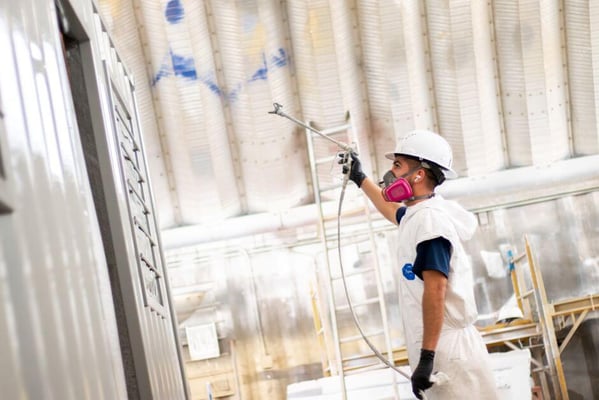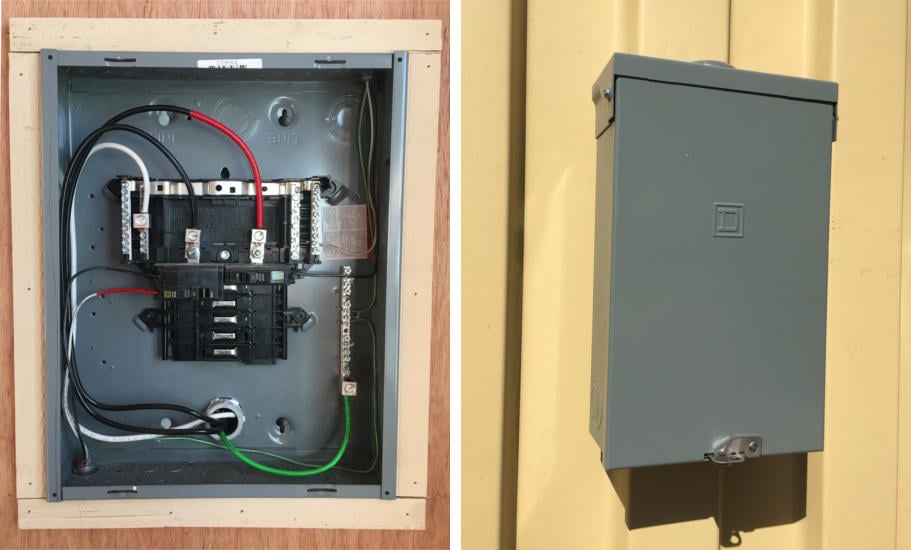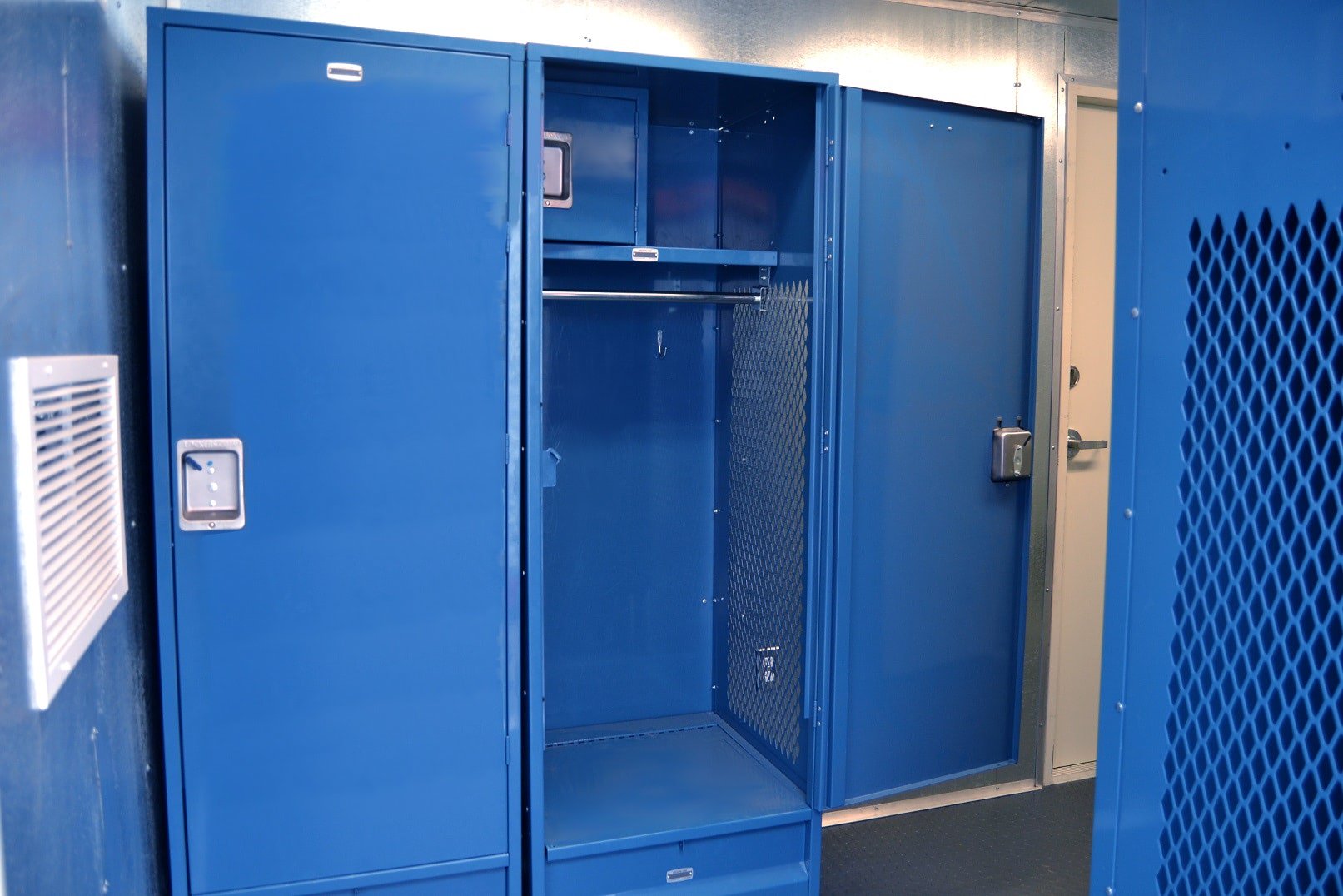How to Paint a Shipping Container: A Step-by-Step Guide
 Becca Hubert | May 7, 2025
Becca Hubert | May 7, 2025

Painting a shipping container does more than add a fun, branded color. It protects the steel from corrosion and extends the container’s lifespan.
But getting a durable, professional-looking finish takes more than just grabbing a brush and cracking a can of color. Proper surface prep, the right primer, and the right type of paint all make a major difference in how your paint job will look and last.
Here’s how to paint your shipping container the right way.
Watch the full process of painting a shipping container.
Step 1: Prep the Surface
Like any paint job, thorough surface preparation is critical. This will give your paint the best chance to adhere and protect the container for years to come.
- Remove stickers and labels: Old shipping labels, decals, and any other adhesives need to be removed to avoid paint peeling later.
- Sand the surface: Focus especially on what we like to call “hot spots,” the welded areas or places where heat from fabrication affected the surface.
- Remove rust: Use a wire brush, grinder, or sandpaper to knock off surface rust. Treat deep rust spots with a rust converter if necessary.
- Clean away dirt and debris: Wipe down or pressure wash the container, letting it dry completely afterward.
- Caulk gaps and openings: Seal seams and any edges around openings, like those for doors and windows, with caulk to keep moisture out.
- Mask and tape: Use painter’s tape and plastic or paper to protect locks, hinges, door hardware, vents, and anything else that won’t be painted.

Step 2: Prime the Container
Next, use primer to create a strong foundation for the topcoat that will also help resist corrosion.
- Use a special primer on bare metal & welds: Areas with bare steel, removed rust, or welds need a high quality direct-to-metal primer.
- Prime the rest of the surface: Once those spots are primed, coat the rest of the container with a corrosion-resistant primer. We use a mid-coat primer, which evens out the surface and prepares it for the top layer of paint.

Step 3: Paint the Container
Now comes the fun part, you’re ready to paint!
- Spray for the best finish: A paint sprayer delivers an even, professional finish. Keep a brush handy for touch-ups if needed.
- Choose your paint: At Falcon, we use 100% acrylic water-based paint with low VOCs (volatile organic compounds) for durability, easier cleanup, and lower environmental impact.
- Consider temperature & humidity: Ideal painting conditions are between 50°F and 85°F with low humidity. Being based in Texas, we know those conditions aren’t a guarantee, so allow your container more time to dry between coats if the weather is uncooperative.
- Allow enough cure time: Ideally, let the paint cure for 48 hours before touching or moving it. Wait about 30 days before pressure washing so the paint can fully harden.

Pro-Tips Before You Go:
- For heavy industrial use, you can use polyurethane paint. But be wary of the hazardous chemicals involved and special procedures for mixing and application.
- Don’t sandblast your container during the preparation stage, as it strips off a lot of marine-grade paint protection that deters rust. It also requires specialized equipment, and the cost and mess of that much sand is substantial.
- Treat any future rust patches as they appear. These could be caused by improperly primed rust spots, unsealed welds, or scratches. If you see brownish-orange stains or bubbling under the paint, sand the spot down, then apply rust-inhibiting primer before touching up with matching paint.
Painting a shipping container the right way takes preparation, the right materials, and a decent amount of patience. But the payoff is worth it. Whether you’re freshening up an older box or finishing a custom container project, a high-quality paint job protects your investment and keeps the structure looking sharp for years to come.
Want more modified shipping container tips, tricks, and insight from the experts with 20+ years of experience? Follow us on LinkedIn and subscribe to our newsletter.
SUBSCRIBE
- Shipping Container Modifications
- How-Tos
- Workspace
- Commercial Construction
- Multi-Container Buildings
- Storage Solutions
- Industrial Enclosures
- Bathrooms & Locker Rooms
- Oil & Gas
- Climate Control
- Green Building
- Living Space
- Industry Insight
- Military & Training Facilities
- Water Treatment Solutions
- Energy
THINK INSIDE THE BOX®
WITH OUR BLOG
Get everything from shipping container basics, to detailed how-tos and industry news in our weekly blog. Stay inspired and subscribe!
RELATED BLOGS

Common Questions about NEMA Standards and ISO Containers
Paige Welsh | Nov 2, 2017 | 3 min read
READ MORE

All-Metal Locker Room for a Compressor Station
Paige Welsh | Mar 27, 2019 | 2 min read
READ MORE

Green Office Ideas and Portable Solar Power with Shipping Containers
Stephen Shang | Nov 10, 2014 | 3 min read
READ MORE